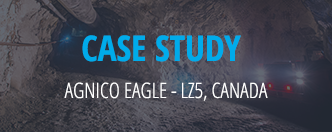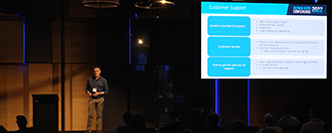Blend 2: multi-period destinations decisions
Blend 2 is our re-engineered blend solution which will eventually supersede Deswik.Blend*. Blend 2 will be incrementally released over the next two releases:
- Blend 2.1 in version 2017.2 (multiperiod, destination decisions only)
- Blend 2.2 in version 2018.1 (multiperiod destinations, single period mining and destinations)
*Existing Blend users will have an option to move to Blend 2. If you have any questions, please contact Deswik Support.
What’s different about Blend2?
A high-level feature comparison is shown below. Unlike Blend, Blend 2.1 is multi-period, enabling users to optimize schedules based on NPV. Blend 2.2 will further extend Blend 2.1 to make scheduling decisions (i.e. push tasks out) and provide a more comprehensive set of mining rules than our current Blend solution.
| Blend | Blend 2.1 | Blend 2,2 |
| Single period | Multi-period | Single period |
| Destination and Mining decisions | Destination decisions only (does not schedule mining tasks) | Destination and Mining decisions (can schedule mining tasks) |
MULTI-PERIOD DESTINATIONS DECISIONS:
Maximize the value of your operation by optimizing the decision of where to send mined material across multiple periods.
Blend 2.1 makes the optimal decision of where to send material once it has been mined. Mine planners can model quantity and quality constraints to ensure that capacities are respected and feed/product qualities are to specifications. In addition, mine planners can associate economics to the material flow in order to model mining and processing costs, stockpile’s related costs and revenues on different parts of the flow.
Key features
- Flexible solutions. Offers alternative solvers for models with different sizes and complexity.
- Multi-Period. Allows true cut-off grade optimization and to find best stockpile strategy to maximize value
- Flexible models. Offers flexibility in modeling different objectives and constraints that are associated to the material flow model.
- Robust decisions. Exact methods are used to solve the model, maximizing the value of the operation.
- Simple user interface. Easy to configure and navigate.
- Scheduler integration. Run, report and validate solutions in a single process.
Mario Silva
Product Manager – Optimization



